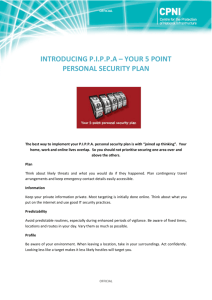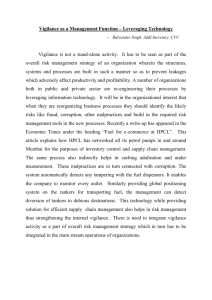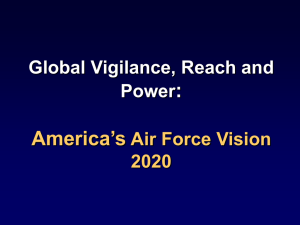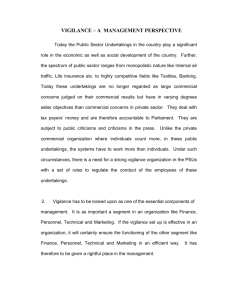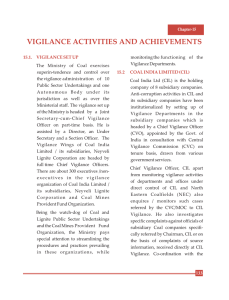Charge & Mission Statement - International Medical Device
advertisement
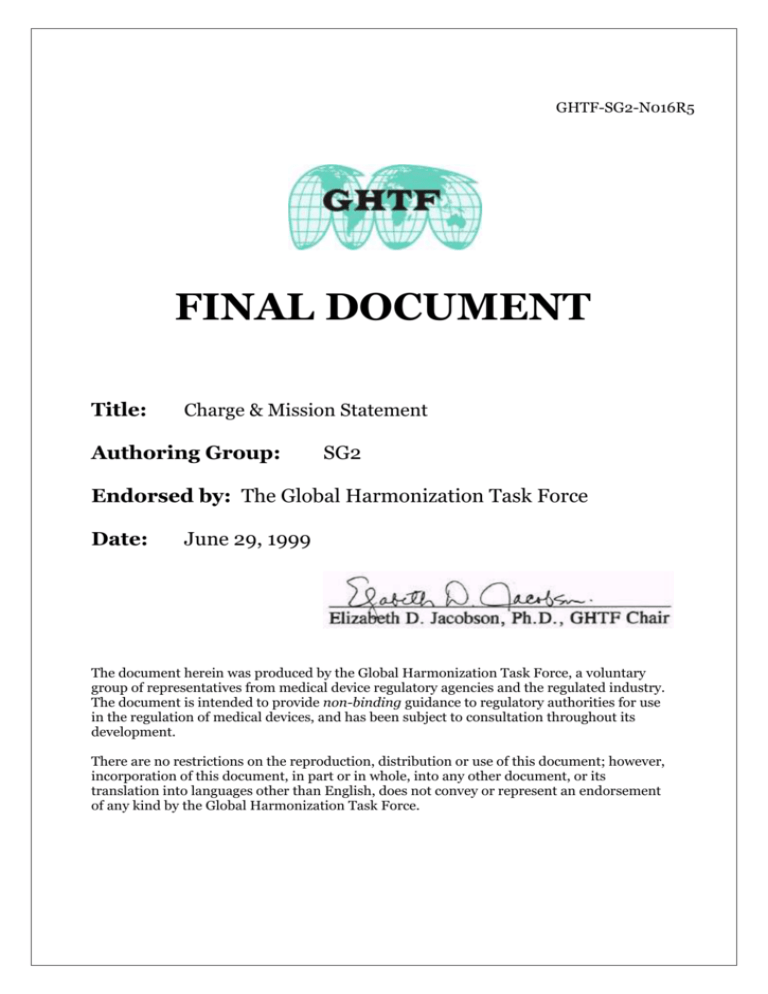
GHTF-SG2-N016R5 FINAL DOCUMENT Title: Charge & Mission Statement Authoring Group: SG2 Endorsed by: The Global Harmonization Task Force Date: June 29, 1999 The document herein was produced by the Global Harmonization Task Force, a voluntary group of representatives from medical device regulatory agencies and the regulated industry. The document is intended to provide non-binding guidance to regulatory authorities for use in the regulation of medical devices, and has been subject to consultation throughout its development. There are no restrictions on the reproduction, distribution or use of this document; however, incorporation of this document, in part or in whole, into any other document, or its translation into languages other than English, does not convey or represent an endorsement of any kind by the Global Harmonization Task Force. SG2 N16 May 1999 Global Harmonization Task Force Study Group 2: Medical Device Vigilance/Post-Market Surveillance Fifth and Final Draft of The Charge for SG 2: 31 May 1996 Mission Statement The purpose of a vigilance and postmarket surveillance system is to improve the protection of the health and safety of patients, users and others by reducing the likelihood of the same type of adverse incident being repeated in different places at different times. This is to be achieved by the evaluation of reported incidents, and where appropriate, dissemination of information which could be used to prevent such repetitions, or to alleviate the consequences of such repetitions. This Study Group will define requirements and guidelines for efficient and effective systems to facilitate the above process on an international basis. The mission statement for this Study Group was developed in the context of the European Directives, from the European Commission Guidelines for Medical Vigilance Final Draft, which harmonizes the vigilance systems in various European countries but could equally be extended on a world-wide basis. Purpose This study group will define requirements for a common medical device vigilance system and provide an international protocol to define and facilitate the transmission of vigilance information on a global basis. Initial tasks will include comparison of current vigilance systems from the participating nations, including comparison to various directives and standards; listing of issues to discuss and problems to solve in developing international recommendations and guidelines for medical device vigilance; recommendations for uniform definitions of terms and codes relevant to data systems; and discussion of systems of information transmission. Vigilance is a subset of post-market surveillance. This group will define recommendations and guidelines of post-market surveillance. Major Issues or Tasks for Discussion Some of the first items below are addressed in the European Commission Guidelines on Medical Device Vigilance and SG 2 should be able to build on that foundation. • What types of event should be reported? Should this include only adverse events required by the European medical device directive? Definition of event and of the relationship of device to medical event. • What type of corrective action should be reported? Who reports? When? To whom? Corrective actions include recalls and other notifications for technical or medical reasons note on Article 10 of the MDD (to be added to reference material). • Who does the initial reporting of events (physicians, other clinical staff, owner/operator of device, patients, distributor, manufacturers)? • To whom are adverse events reported? We need to consider whether information on an incident might only be communicated to participants in the GHTF or other countries SG2 Final Draft:Charge 31 May 1996 P.2 SG2 N16 May 1999 after an assessment has been made and where the appropriate regulatory agency has taken or is contemplating relevant measures. What connection is there between this reporting and other available adverse event data bases, e.g., ECRI? • What information is reported? What constitutes the minimum data sets for reporting at various stages of the vigilance process?. • When should initial, interim and final reports be made to and between the appropriate authorities? Do reports need to await final results or outcomes before sharing information? When can an interim report (even an initial report) become part of an international medical device vigilance system? • What level of assessment/analysis is required prior to dissemination of reports? Who investigates the event? What questions are asked in the investigation and what are the boundaries of those investigations? Do the investigations include failure analyses? Does this level of assessment vary with the nature of the adverse events or the potential for negative outcomes? What permits closure of an individual case or adverse event report? • Definitions within reporting systems: what nomenclature systems will be used and what are the requirements of a nomenclature system for vigilance; what coding schemes or other tools are available to uniformly and consistently identify products to the model level, outcomes, etc.? • Can reporting formats be standardized? Can we specify the vigilance system requirements for electronic data interchange and the necessary security and confidentiality issues related to EDI? • Should a corrected action data base be part of this vigilance system? • Some regulatory agencies require the specific tracking of individual devices. Can universal minimum traceability data requirements be developed? More generally, should manufacturers be required to make distribution and use data available to interpret device events in a public health context? • Registry of products: when are product registries warranted? What information should be included in such registries and what information can be available to regulatory agencies, and at what frequency? • Some authorities have begun product-type or product-specific post-market studies as a part of the overall vigilance effort. When are such studies indicated? If these are undertaken by one country, when is it reasonable to share the information? SG2 Final Draft:Charge 31 May 1996 P.3
